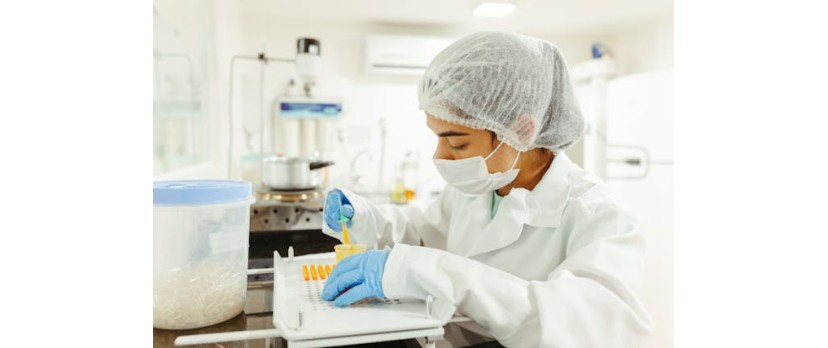Accurate pipetting can significantly impact lab research. Yet, even experienced teams face challenges with mistakes, wasted samples, and inefficient workflows. These challenges are not only exasperating—they delay progress in important projects.
Did you know automated pipetting systems have transformed liquid handling in labs? They’ve greatly improved speed, precision, and productivity while minimizing human errors. This blog will examine how modern pipetting tools save time, improve accuracy, and promote safety.
Looking to discover more effective strategies? Keep reading!
The Evolution of Pipetting Solutions
Mouth pipetting once dominated labs, but it risked health hazards. Scientists handled dangerous chemicals directly, and accidents were common. In the 1950s, Heinrich Schnitger invented the first mechanical air-displacement pipette.
This tool was safer and improved precision in liquid transfer tasks. It became a significant advancement for laboratory equipment.
Over the last 20 years, automated dispensing solutions have expanded rapidly. These systems now handle higher volumes with remarkable accuracy compared to manual methods. Manual air-displacement pipettes still hold popularity due to their simplicity and affordability.
"Progress is achieved when safety aligns with precision," emphasizes this shift from risk-heavy practices to reliable tools like modern liquid handling systems.
Key Innovations in Pipetting Technology
Pipetting tools have advanced in leaps and bounds, offering smarter solutions to everyday lab challenges. These technologies are reshaping how scientists tackle liquid handling tasks with precision and speed.
Automated Pipetting Systems
Automated pipetting systems accelerate sample handling and reduce errors. Robotic liquid handling systems accurately transfer liquids, ensuring precision across high-throughput testing.
These machines manage hundreds or thousands of samples daily, suitable for assay development or miniaturized compound testing. Their efficiency also decreases the likelihood of human error in repetitive tasks.
By automating liquid transfers, laboratories save time and enhance safety when working with hazardous materials. Advanced automated dispensing technology ensures precise control over small volumes while maintaining consistency.
Laboratories using automation expand their workflows without compromising quality—ideal for busy environments aiming to increase output effectively.
Semi-Automated Pipettes
Semi-automated pipettes connect manual and automated systems. These tools combine precision with user control, making them ideal for liquid transfer tasks that require adaptability.
With electronic components, they enhance accuracy and reduce user strain during repetitive workflows.
Multichannel versions offer ergonomic advantages by allowing simultaneous processing of multiple samples at once. They are particularly effective in managing low-volume pipetting needs, such as microliter or nanoliter ranges.
For labs working with valuable or hazardous samples, these devices help minimize waste and exposure risks while ensuring consistent results.
Digital Pipetting Tools
Digital pipetting tools provide enhanced precision in dispensing. These systems incorporate cloud-based platforms, such as DISPENDIX Cloud, to optimize workflow efficiency and data sharing.
With electronic controls, users achieve accuracy in liquid transfer systems without manual strain. Business owners can depend on these tools for efficient high-throughput pipetting while minimizing human error.
Cloud connectivity promotes collaboration across teams, accelerating decision-making processes. Advanced features enable easy integration into automated liquid handling setups or standalone use.
By simplifying electronic liquid handling tasks, digital options save time and preserve valuable samples during experiments.
Benefits of Advanced Pipetting Solutions
These tools save time, reduce errors, and make handling complex samples easier—read further to see how they can improve your lab processes.
Increased Throughput and Productivity
Automated liquid handling systems reduce manual tasks like serial dilutions. They allow lab staff to concentrate on other important work while the machines manage repetitive steps.
This "walk-away" time enhances productivity across teams.
Parallel processing increases sample throughput by running multiple processes simultaneously. Automated plate handling systems manage microplate storage and transport effectively, ensuring efficient workflows and time-saving solutions.
Such tools streamline processes, leading to quicker results with better accuracy throughout.
Enhanced Reproducibility and Accuracy
Improved precision in pipetting directly impacts consistent results. Advanced pipetting tools, such as the I.DOT Non-Contact Dispenser, enables scientists to dispense volumes as low as 8 nL.
This precise liquid handling reduces variability and minimizes contamination risks during processes like PCR/qPCR or handling small reagent volumes.
Reduced human intervention eliminates user-related errors that often affect reproducibility. Automated dispensing ensures reliable measurements across multiple runs, saving time while producing more accurate data.
Traceability is also enhanced, making these systems essential for laboratories dealing with precious or hazardous samples.
Efficient Handling of Hazardous or Precious Samples
Handling dangerous or valuable samples demands precision. Non-contact microfluidic methods reduce the risk of DNA and RNA contamination while allowing miniaturization of assays.
High-throughput screening also aids in protecting against sample loss and cross-contamination during liquid transfers.
Liquid Handling Stations (LHS) make working with viscous liquids easier by using effective motors and thorough well-cleaning capabilities. These tools reduce risks when managing hazardous materials, ensuring safer workflows for staff while maintaining sample integrity.
Strategies to Boost Laboratory Pipetting Efficiency
Improve your workflow with smarter pipetting practices. Small adjustments can make a significant difference in precision and speed.
Choosing the Right Pipetting System
Choosing the right pipetting system can drastically improve laboratory efficiency. It requires thoughtful consideration of technology, workflow needs, and sample types—many labs choose Pipette for reliable, high-performance tools that meet modern research demands.
Assess your lab's workload and throughput demands. Automated liquid handling systems work well for high-throughput labs, while semi-automated tools suit medium-scale operations.
Consider the nature of samples being handled. Labs dealing with hazardous or precious materials benefit from precision liquid handling technologies like digital pipettes.
Match the pipette type to assay formats. Multichannel pipettes save time in repetitive tasks like plate filling or parallel processing.
Factor in ergonomics for staff comfort. Pipettes with lightweight designs reduce strain during prolonged use and enhance productivity.
Look at compatibility with digital tools. Integration with software promotes assay automation and improves workflow tracking.
Invest in configurable systems for versatility. Customizable solutions adapt better to unique workflows, ensuring your equipment meets future needs.
Keep operator skills in mind when choosing setups. While automated systems handle complex tasks, manual flexibility remains crucial for certain lab protocols.
Prioritize quality over cost-saving decisions. High-quality systems often provide long-term savings by reducing errors and increasing reproducibility.
Minimizing Common Pipetting Errors
Mistakes in pipetting can waste time and resources. Minimizing these errors enhances lab efficiency and ensures consistent results.
Educate staff on accurate pipetting techniques. Regular refresher courses can reinforce good habits and prevent errors.
Opt for digital pipettes with error detection features. These tools reduce manual inaccuracies and maintain volume consistency.
Calibrate pipettes on a regular schedule. Routine maintenance preserves accuracy and helps avoid incorrect readings.
Prevent air bubbles during liquid handling steps. Slow plunger movements ensure smooth sample aspiration.
Use clean, contamination-free tips for each task. Disposable tips help avoid cross-contamination between samples.
Monitor performance through data management systems like cloud-based platforms. These solutions ensure traceability while upholding operational standards.
Account for environmental factors such as humidity or temperature changes that can influence sample volumes. Subtle shifts in surroundings may affect measurements.
Maintain the correct angle when using pipettes to ensure consistent liquid handling. A near-vertical position promotes precision in sample transfer.
Reduce repetitive movements to lower the risk of physical strain on operators’ hands or wrists during extended work sessions.
Reserve specific tools for hazardous or sensitive samples to uphold safety protocols and ensure sample integrity.
Integrating Digital Tools for Workflow Optimization
Integrating digital tools into laboratory workflows is smart and practical. These tools simplify processes and save time for teams.
Use cloud-based platforms for better efficiency. Systems like DISPENDIX Cloud improve collaboration among team members. They also allow real-time data access from anywhere.
Switch to digital pipetting solutions for accuracy. Digital systems reduce manual errors common in traditional methods. This change enhances consistency in experiments.
Invest in automated software to manage pipetting tasks. Automation reduces repetitive work and speeds up operations dramatically. Rebecca Lampert highlighted these benefits on October 2, 2024.
Track sample usage through integrated systems. Cloud-enabled tools keep records of precious or hazardous materials securely. Teams save time by avoiding duplicate efforts.
Incorporate collaborative software for smoother communication. Shared platforms help business owners monitor laboratory progress remotely with ease.
Rely on digital integration to improve resource management. Reallocating labor becomes easier when technology handles repetitive tasks efficiently.
Keep adopting workflow improvement tools over time as lab needs evolve naturally!
Conclusion
Modern pipetting tools save time and reduce errors. They enhance precision, safeguard important samples, and improve lab safety. By selecting the appropriate systems and methods, laboratories can work more efficiently and quickly.
Don’t let older methods slow you down—adopt technology to maintain progress in research.


Login and write down your comment.
Login my OpenCart Account